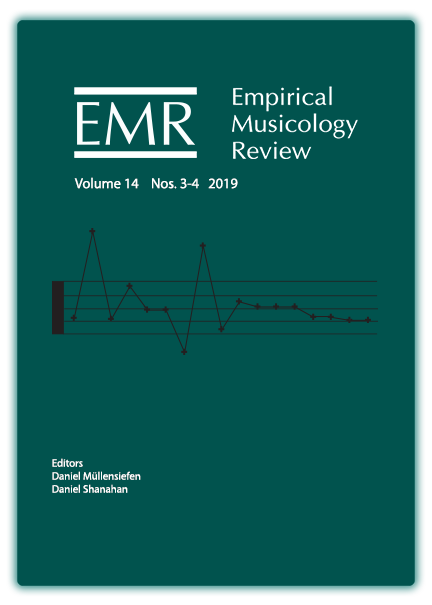Unplayed Galant Melodies, the Ubiquity of the Rarest Interval, and the Heyday of the Major Mode
DOI:
https://doi.org/10.18061/emr.v14i3-4.6070Keywords:
galant schemata, eighteenth-century music, diatonic set, tonality, pitch reductionAbstract
This article examines in a preliminary fashion the potential connections between the usage of Gjerdingen's (1988, 2007) skeletal galant schemata, the heyday of the major mode during the period 1750-1799 (Albrecht & Huron, 2014; Horn & Huron, 2015), and the rare intervals of the diatonic set (Browne, 1981). I discuss the relations between the rarity of the tritone and semitone in the diatonic template and in musical usage (Huron 2006, 2008; David Temperley, personal communication, 2017). I hypothesize that the skeletal usage of schemata emphasizes rare intervals (tritone and semitone) respective to their common counterparts. Though this is predominantly an armchair, speculative inquiry, a preliminary pilot analysis of a small expert-annotated corpus from Gjerdingen (2007) provides tentative support for the hypothesis that the skeletal usage of schemata overemphasizes vertical tritones, but not melodic semitones. The prevalence of skeletal tritones in the schemata abstracted by Gjerdingen suggests that the process of abstraction is associated with finding unambiguous cues for a local tonal context. While the present article relies on Gjerdingen's expert analytical annotations of a small corpus and extraction of a contrapuntal skeleton, I conclude by offering hypotheses for future testing regarding the increased prevalence and salience of tritones on the musical surface in the period 1750-1799, a subset of common-practice tonality.
Published
How to Cite
Issue
Section
License
Copyright (c) 2020 Gilad Rabinovitch

This work is licensed under a Creative Commons Attribution-NonCommercial 4.0 International License.


